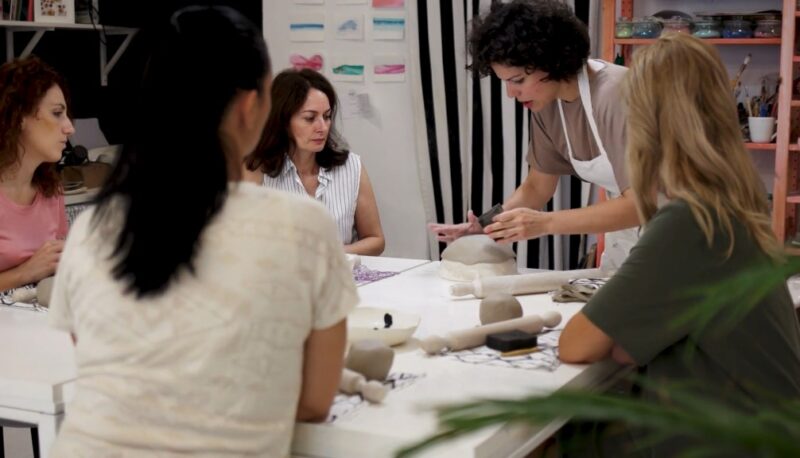Inclusion isn’t just a buzzword; it’s a way of life that fosters better connections and a more harmonious society.
Becoming more inclusive in your daily life isn’t about grand gestures but small, consistent actions that show respect and understanding for those around you.
Here’s how you can start embracing inclusion every day.
1. Start with Self-Reflection

Inclusion begins with examining your own attitudes and behaviors. Ask yourself:
- How do I react to people who are different from me?
- Do I make assumptions about others based on stereotypes?
- Am I open to learning about other cultures, abilities, and perspectives?
Honest answers to these questions can guide you in identifying areas where you can improve.
2. Educate Yourself
Knowledge is a powerful tool for fostering inclusion. Spend time learning about different cultures, communities, and issues faced by marginalized groups.
Books, documentaries, and reputable online resources are great starting points.
For example, reading literature by authors from diverse backgrounds can offer valuable insights into their experiences and challenges.
Recommended Resources
- Books: “How to Be an Antiracist” by Ibram X. Kendi, “Caste” by Isabel Wilkerson
- Documentaries: “13th” on Netflix, “Crip Camp” on Netflix
- Websites: Human Rights Campaign, Amnesty International
3. Listen Actively
One of the most impactful ways to be inclusive is to listen. Truly listening involves more than just hearing words; it’s about understanding the emotions and intentions behind them.
Practice active listening by:
- Making eye contact
- Avoiding interrupting
- Asking open-ended questions
- Reflecting back what you hear
By showing genuine interest in others’ experiences, you build trust and demonstrate that their voices matter.
4. Use Inclusive Language
Language shapes our perception of the world. Being mindful of your words can make a big difference in making others feel included. Some tips include:
- Avoiding gender-specific terms when they aren’t necessary (e.g., using “they” instead of “he” or “she”).
- Refraining from using derogatory terms or slurs.
- Respecting people’s chosen names and pronouns.
Inclusive language shows respect and consideration for everyone’s identity and experiences.
5. Challenge Stereotypes

Stereotypes can be harmful and limiting. They create barriers to understanding and inclusion. To combat stereotypes:
- Question your own biases and challenge them.
- Speak up when you hear someone else perpetuating stereotypes.
- Encourage others to think critically about their assumptions.
Promoting a more inclusive environment often means challenging the status quo and encouraging others to do the same.
6. Be an Ally
Being an ally involves taking active steps to support and advocate for marginalized groups. This could mean:
- Standing up against discrimination and injustice.
- Amplifying the voices of those who are often unheard.
- Supporting policies and practices that promote equality and inclusion.
Allies play a crucial role in creating a more inclusive society. Your support can make a significant impact.
7. Create Inclusive Spaces

Whether it’s at work, in your community, or at home, creating inclusive spaces means ensuring that everyone feels welcome and valued. Some ways to do this include:
- Designing spaces that are accessible to people with disabilities.
- Hosting events that celebrate diversity.
- Encouraging diverse representation in decision-making processes.
Inclusive spaces foster a sense of belonging and respect for all individuals.
8. Practice Empathy
Empathy involves putting yourself in someone else’s shoes and trying to see the world from their perspective. Practicing empathy can help you connect with others on a deeper level. Ways to develop empathy include:
- Listening to people’s stories and experiences.
- Reflecting on how you would feel in their situation.
- Offering support and understanding.
Empathy bridges gaps and builds stronger, more inclusive communities.
9. Support Inclusive Initiatives

Support organizations and initiatives that promote inclusion. This could mean volunteering your time, donating money, or simply spreading the word about their work.
Some organizations to consider:
- Local community centers: Many offer programs that support diverse cultures and populations.
- Nonprofits: Groups like the American Civil Liberties Union (ACLU) and the NAACP work to promote equality and justice.
- Schools and universities: Support diversity and inclusion programs within educational institutions.
By supporting these initiatives, you contribute to a larger movement towards inclusivity.
10. Reflect and Adapt
Inclusion is an ongoing process. Regularly reflect on your actions and their impact.
Ask for feedback from others and be willing to adapt. Inclusion isn’t about being perfect but about making continuous efforts to improve.
Key Reflection Questions
- What have I done to promote inclusion today?
- How can I improve my inclusive practices?
- What have I learned from my interactions with others?
Reflecting on these questions can help you stay committed to your journey toward inclusivity.
11. Engage in Community Activities

Participating in community activities that celebrate diversity can be a great way to learn and grow. Attend cultural festivals, workshops, and events that bring different communities together.
These experiences can broaden your perspective and help you build meaningful connections.
Ideas for Community Engagement
- Cultural festivals: Explore and celebrate different traditions and customs.
- Workshops: Attend sessions on diversity and inclusion.
- Volunteer opportunities: Help out at local organizations that support marginalized communities.
Being active in your community shows your commitment to fostering an inclusive environment.
Final Thoughts
Becoming more inclusive in everyday life is a continuous journey of learning, reflection, and action.
By educating yourself, listening actively, using inclusive language, challenging stereotypes, being an ally, creating inclusive spaces, practicing empathy, supporting inclusive initiatives, reflecting regularly, and engaging in community activities, you can make a significant impact.
Remember, inclusion starts with you and the small, consistent actions you take each day. Let’s work together to create a world where everyone feels valued and respected.

